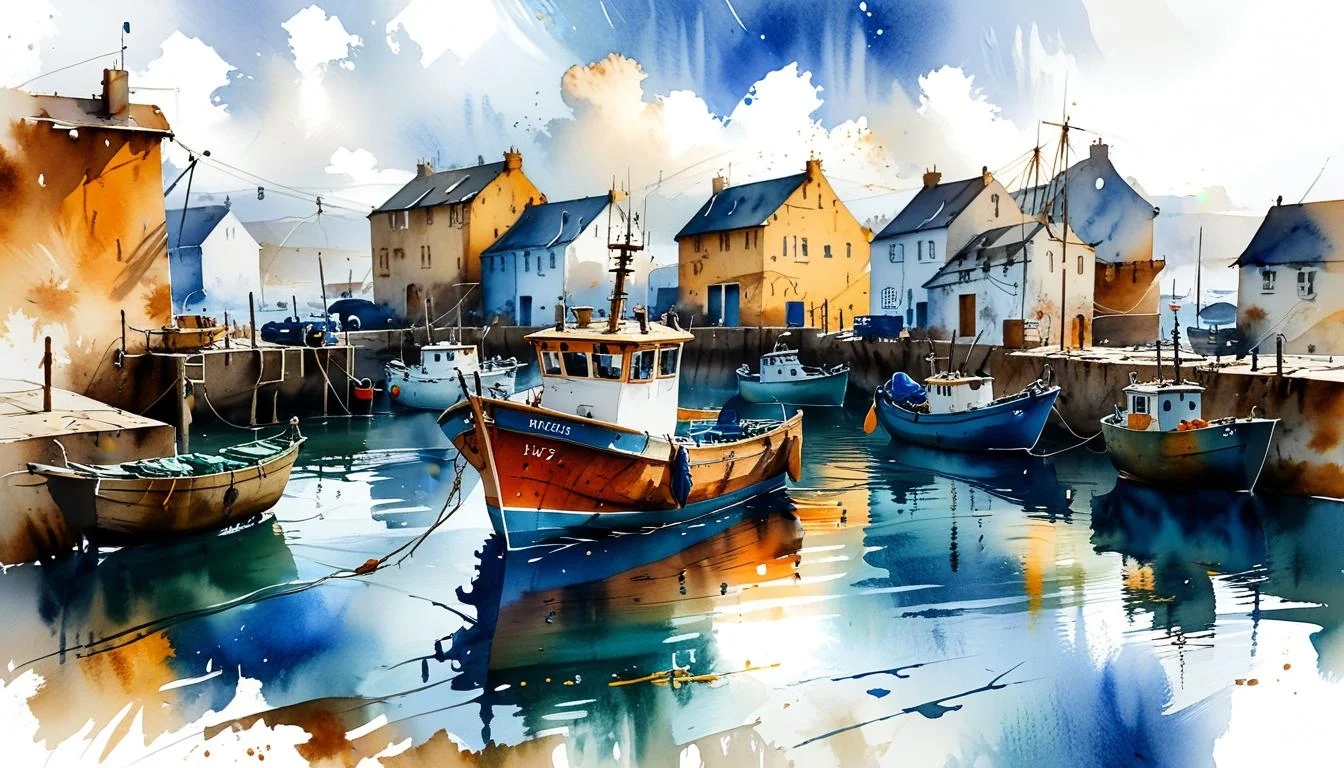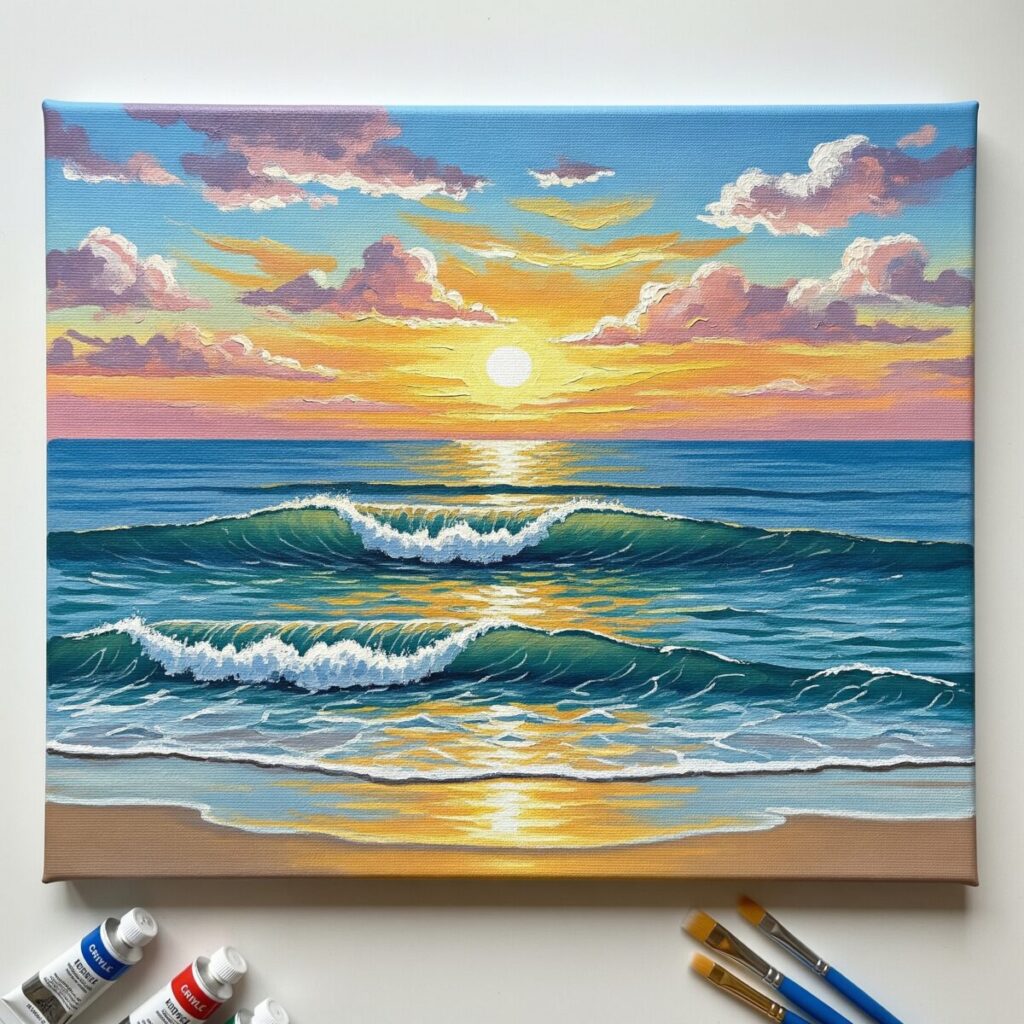Seascape painting is a captivating art form that allows you to capture the beauty and power of the ocean on canvas. Whether you’re drawn to crashing waves, serene beaches, or dramatic coastal scenes, this guide will help you dive into the world of seascape painting with confidence. Let’s explore the essential techniques and tips to create stunning marine masterpieces!
Setting the Scene: Materials and Preparation
Before we dive into the painting process, let’s gather the necessary materials and set up our workspace:
Essential Supplies
- Canvas or painting surface
- Acrylic or oil paints (blues, greens, whites, and earth tones)
- Brushes (flat, round, and fan brushes in various sizes)
- Palette for mixing colors
- Palette knife
- Easel
- Water container (for acrylics) or solvent (for oils)
- Paper towels or rags
Creating Your Workspace
Find a well-lit area with enough space to step back and view your work. Natural light is ideal, but a good lamp can work wonders too. Set up your easel and organize your materials for easy access.
Understanding Seascape Elements
A successful seascape painting typically includes these key elements:
- Sky and clouds
- Water (ocean, sea, or lake)
- Waves and foam
- Beach or rocky shore
- Distant land or islands (optional)
- Boats or other marine elements (optional)
See some great examples from the Masters to inspire you:

| Painting | Artist | Gallery |
|---|---|---|
| The Great Wave off Kanagawa | Katsushika Hokusai | Metropolitan Museum of Art, New York |
| Impression, Sunrise | Claude Monet | Musée Marmottan Monet, Paris |
| The Ninth Wave | Ivan Aivazovsky | State Russian Museum, St. Petersburg |
| The Fighting Temeraire | J.M.W. Turner | National Gallery, London |
| Seascape Study with Rain Cloud | Vincent van Gogh | Vincent van Gogh Museum, Amsterdam |
| The Gulf Stream | Winslow Homer | Metropolitan Museum of Art, New York |
| Moonrise | Caspar David Friedrich | Hermitage Museum, St. Petersburg |
| Rough Sea at Étretat | Claude Monet | Musée d’Orsay, Paris |
| Seascape at Saintes-Maries | Vincent van Gogh | Van Gogh Museum, Amsterdam |
| Brighton Beach | John Constable | Tate Britain, London |
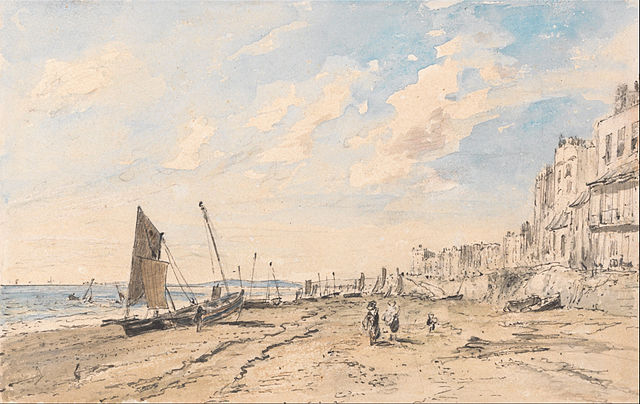
Mastering Color and Light
The interplay of light and color is crucial in seascape painting. Here’s how to approach it:
Color Palette
- Blues: Ultramarine, Cerulean, Phthalo Blue
- Greens: Viridian, Phthalo Green
- Earth tones: Raw Sienna, Burnt Umber
- White: Titanium White
| Tool: Color Palette Generator |
|---|
| Need inspiration for a new palette colors for your next masterpiece use our tool to suggest endless palettes! |
Capturing Light
- Observe how sunlight affects the water’s surface
- Pay attention to reflections and glare
- Use lighter tones for areas hit by direct sunlight
Techniques for Painting Water
Water is the star of your seascape. Here are some techniques to bring it to life:
Creating Movement
- Use horizontal brushstrokes for calm water
- Employ diagonal strokes for choppy seas
- Add white highlights for foam and spray
Depicting Depth
- Use darker colors for deeper water
- Gradually lighten the color as it approaches the shore
- Add reflections of the sky to create a sense of depth
Bringing Life to Waves
Waves add drama and movement to your seascape. Here’s how to paint them effectively:
- Start with the base color of the water
- Add darker tones to create the wave’s body
- Use white or light blue for the crest
- Add foam and spray with a fan brush or by flicking white paint
Sky and Clouds
The sky sets the mood for your seascape. Consider these tips:
- Use a gradient from darker at the top to lighter near the horizon
- Paint clouds with soft edges for a realistic look
- Reflect sky colors in the water for cohesion
Adding Details and Focal Points
Enhance your seascape with these elements:
- Seagulls or other coastal birds
- Distant boats or ships
- Rocks or cliffs
- Beach vegetation or driftwood
Common Pitfalls and How to Avoid Them
Watch out for these common mistakes:
- Overworking the painting
- Using unrealistic colors
- Forgetting to create depth and perspective
- Neglecting the importance of the horizon line
Exercises to Improve Your Skills
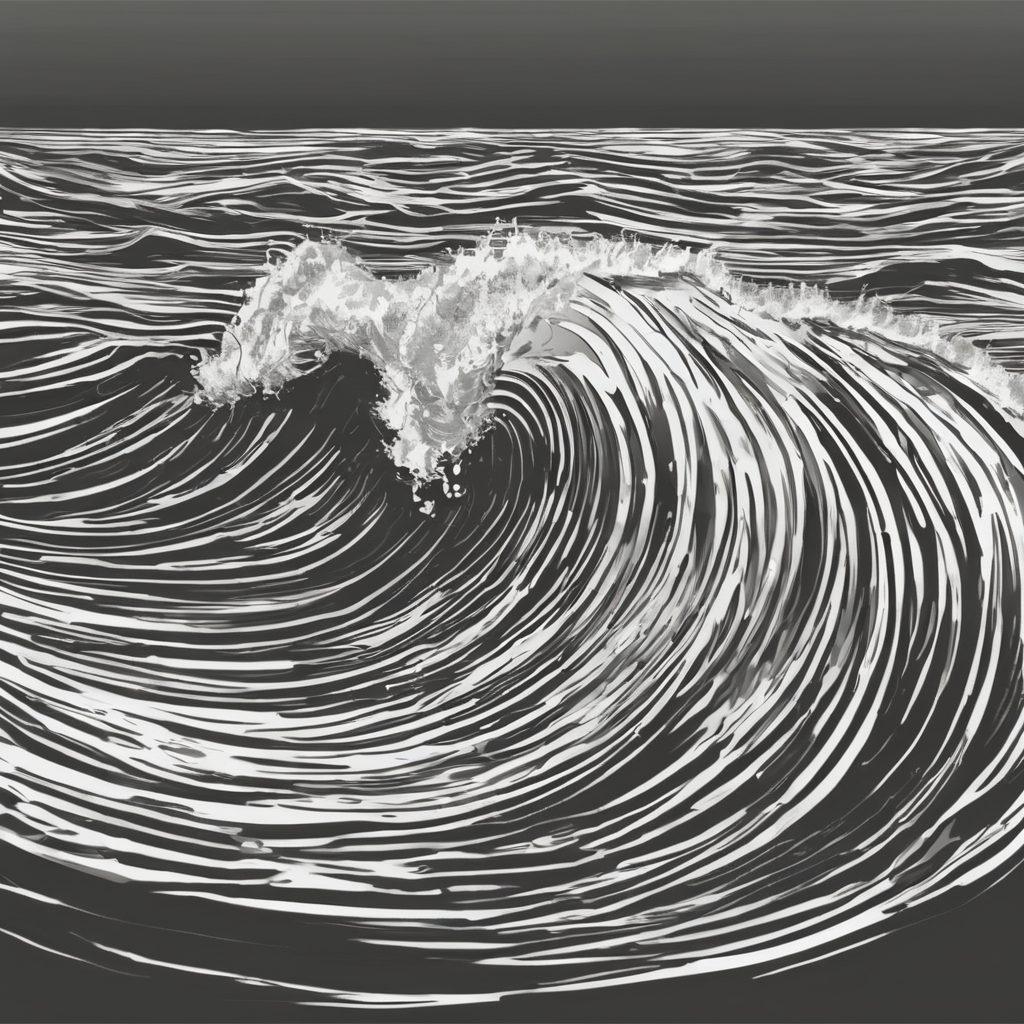
Practice makes perfect! Try these exercises:
- Quick sketches of waves and water movement
- Color studies of different times of day
- Miniature seascapes focusing on composition
- Cloud formation paintings
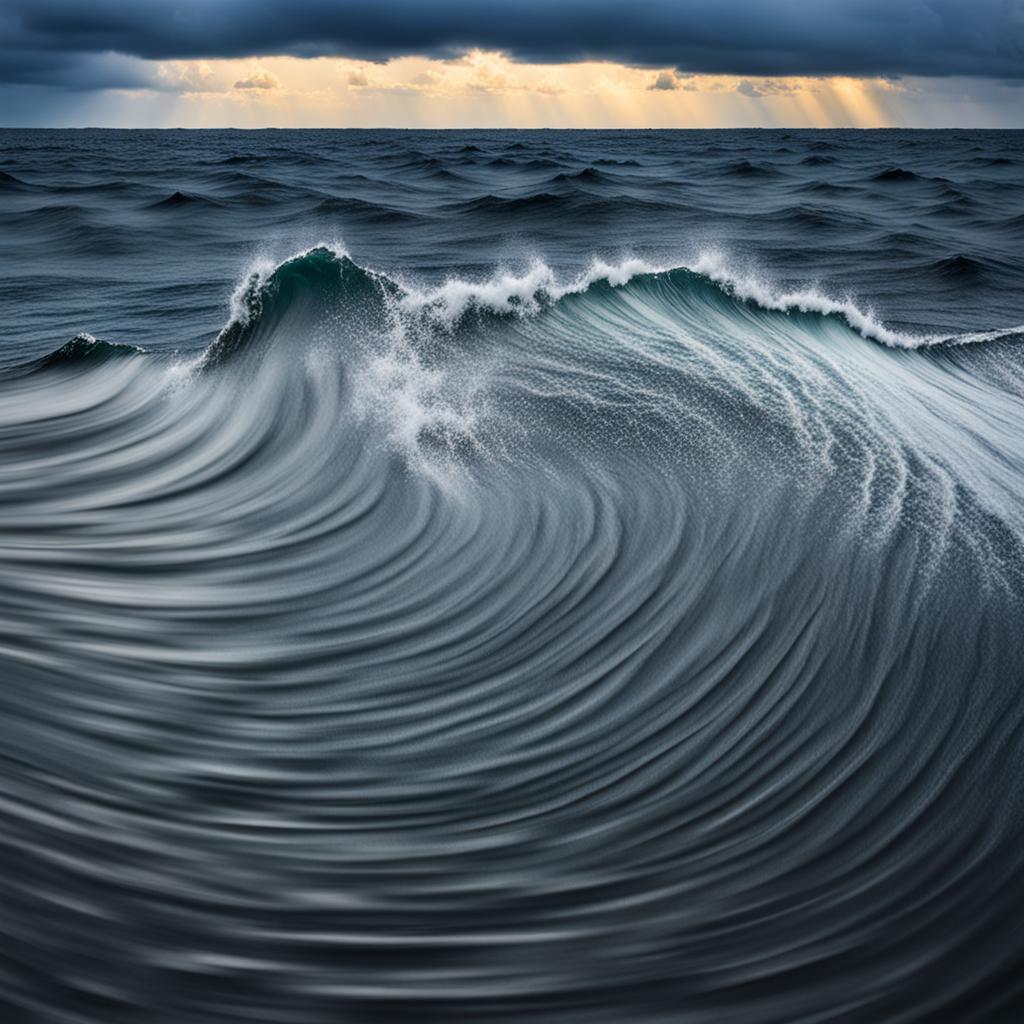
Bringing It All Together
As you embark on your seascape painting journey, remember these key points:
- Observe real seascapes whenever possible
- Start with a solid composition sketch
- Build your painting in layers, from background to foreground
- Don’t be afraid to experiment with colors and techniques
- Practice regularly and be patient with your progress
Seascape painting offers endless opportunities for creativity and expression. With each painting, you’ll develop your unique style and ability to capture the ever-changing moods of the sea. So grab your brushes, breathe in the salty air (even if it’s just in your imagination), and let the waves of inspiration carry you away!
Happy painting, and may your artistic journey be as vast and beautiful as the ocean itself!

